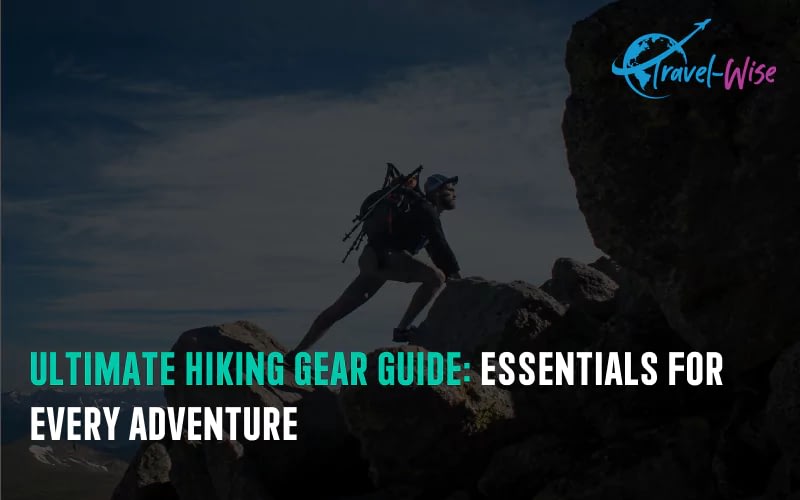Having the right hiking gear is key. It is essential for a safe, comfy, and enjoyable hike. You might be going on a short day hike or a multi-day backpacking trip. The gear you carry can make or break your journey. Poorly fitting shoes, a bad backpack, or the wrong clothing layers can cause blisters. They can also cause fatigue and exposure. They can turn a fun outdoor trip into misery.
Proper hiking gear not only enhances your comfort but also ensures your safety on the trails. Maps and compasses are navigation tools. They, along with first aid kits and signal devices, can be lifesavers in emergencies. Also, the right gear lets you fully enjoy nature’s beauty. It frees you from discomfort and worry. So, you can cherish the landscapes and peace of the outdoors.
Good hiking gear is a smart investment. It will improve your enjoyment and well-being on the trail. With the right gear, you can confidently go on your adventures. You’ll know that you’re ready for whatever challenges nature may bring. You’ll enjoy the rewards of exploring the great outdoors.
Featured Image Source
Hiking Footwear
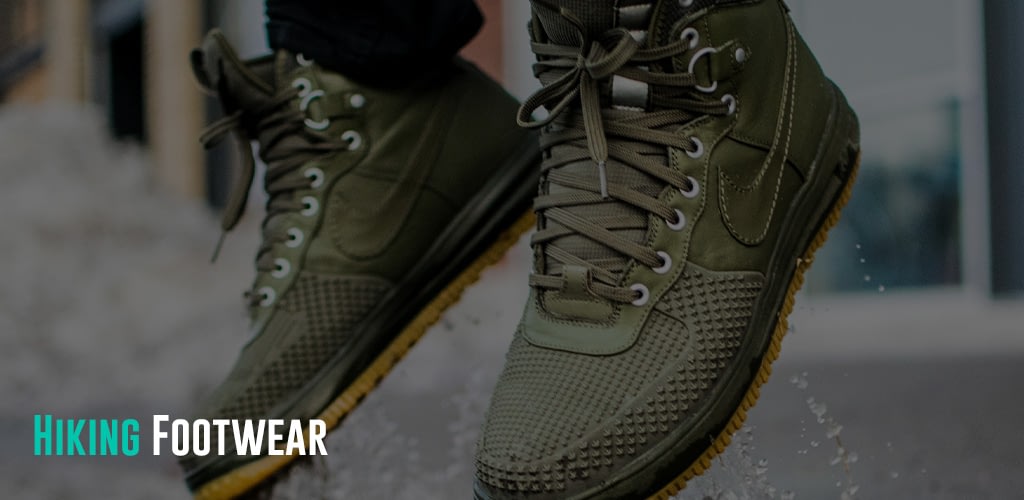
Choosing the right footwear is arguably the most crucial decision when gearing up for a hike. Your feet are your foundation. Bad or too small shoes can quickly ruin even the best adventure. Here’s what you need to know about hiking footwear.
Hiking Boots: Materials, Features, Fitting, and Break-in Process
Hiking boots are made to provide the most support, grip, and protection. They are for rugged terrain. They typically feature:
- Sturdy uppers made from leather, synthetic fabrics, or a combination of both
- Soles are constructed with lugged patterns for superior grip on various surfaces.
- Many incorporate waterproof or water-resistant membranes to keep your feet dry.
When trying on hiking boots, ensure:
- A snug fit in the heel cup to prevent blisters
- There is enough room in the toe box for your feet to swell during long hikes.
- A proper break-in period is essential to mold the boots to your feet and avoid discomfort on the trail.
Hiking Shoes: Pros and Cons Compared to Boots
Hiking shoes, also called trail runners, are light and flexible. They are an alternative to boots. They offer:
- Better breathability
- They have a more natural stride, making them ideal for day hikes on well-maintained trails.
However, they typically:
- Provide less ankle support and protection than boots.
- May not be suitable for carrying heavy loads or tackling rough, rocky terrain.
Hiking Socks: Moisture-wicking, Cushioning, and Blister Prevention
The right socks can make a big difference. They prevent blisters and keep your feet comfortable on the trail. Look for:
- Fabrics like merino wool or synthetics wick moisture. They prevent sweat from accumulating on your skin.
- The socks are cushioned. They have reinforced heel and toe areas. These areas provide extra protection from friction and abrasion.
- Proper sock length and fit to avoid bunching or restriction of movement
You must invest in good hiking shoes and socks. They are key for a comfy and fun hike. Take the time to properly fit and break in your gear, and your feet will thank you on every step of the journey.
Backpacks
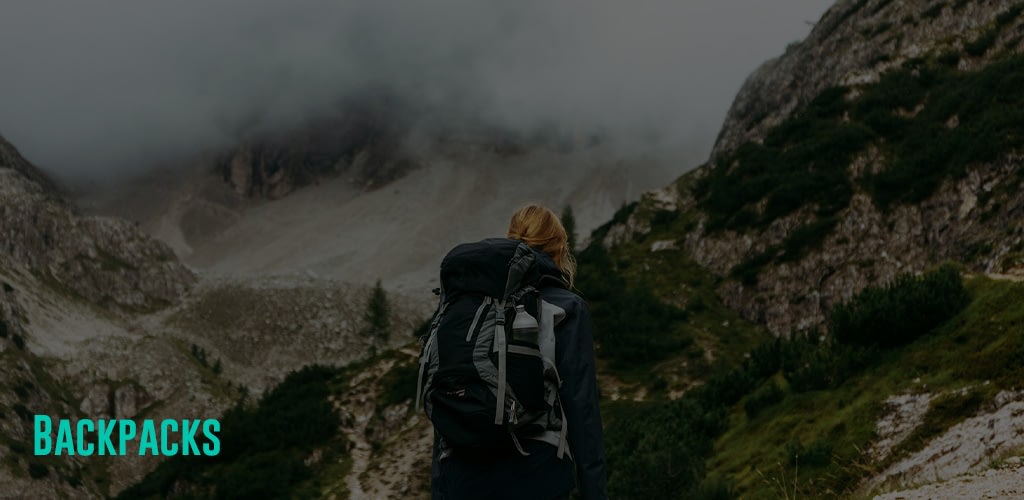
Your backpack is your loyal companion on the trail. It carries all the essentials you need for a successful hike. Choosing the right pack is crucial for comfort, organization, and protecting your gear. Here’s what you need to know:
Daypacks vs. Multi-Day Packs
Daypacks
- Smaller capacity, typically 20–30 liters
- Ideal for quick overnight trips or day hikes
- Minimalistic features, lighter weight
Multi-day Packs
- Larger capacity, ranging from 40 liters up to 70+ liters
- Built for extended backpacking trips
- More features for organization and load distribution
Capacity, Fit, and Suspension Systems
Capacity
- Match the pack size to the length of your hike and the amount of gear you need.
- Avoid overpacking or choosing a pack that’s too small.
Fit
- Proper torso length and hip belt fit are essential for comfortable load transfer.
- Adjustable suspension systems allow for customization.
Suspension Systems
- Internal frame sheets or stays provide structure and support.
- Well-designed hip belts and shoulder straps distribute weight evenly.
Access, Pockets, and Organization
- Top-loading or panel-loading access styles
- Multiple compartments and pockets keep gear organized.
- External attachment points for trekking poles, ice axes, etc.
- Hydration reservoir sleeves for easy water access
Waterproofing and Rain Covers
- Many packs have water-resistant coatings or waterproof materials.
- Built-in rain covers or separate rain covers provide extra protection.
- Ensure adequate coverage for your pack size.
A good backpack, made for your hiking needs, can greatly improve your comfort and joy on the trail. Consider the features, capacity, and fit that best suit your adventures.
Trekking Poles
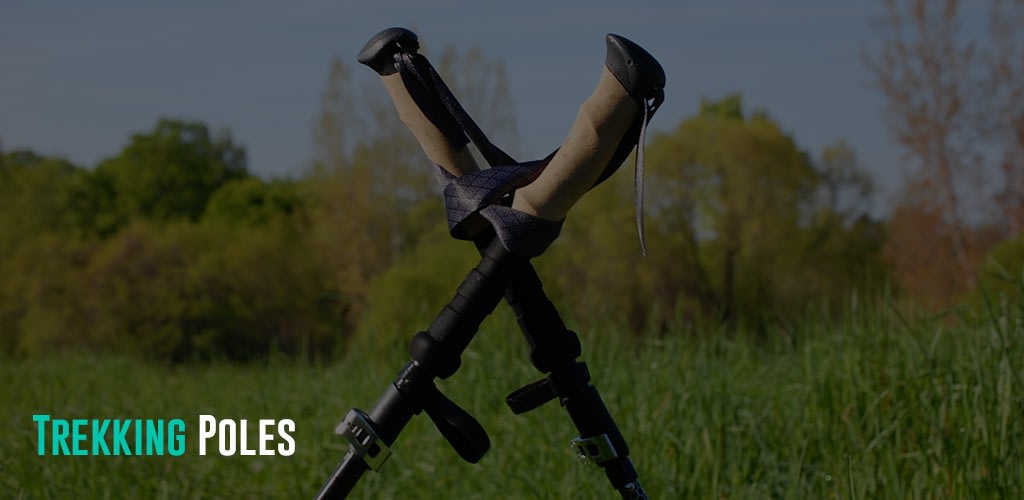
Trekking poles seem simple. But they can greatly improve hiking and offer key benefits. Here’s what you need to know:
Benefits of Using Trekking Poles
- Distribute weight and reduce stress on the knees and joints.
- Improve balance and stability on uneven terrain.
- Increase endurance by engaging the upper body.
- Provide additional points of contact for challenging terrain.
Types and Materials
Telescoping vs. Fixed-Length
- Telescoping poles adjust in length for better packability.
- Fixed-length offers simplicity and reduced weight.
Materials
- Aluminum: lightweight, affordable, and durable
- Carbon Fiber: Ultralight, more expensive, and more fragile
Adjustability and Shock Absorption
Adjustability
- Look for poles with easy-to-use locking mechanisms.
- The ability to adjust length improves fit and versatility.
Shock Absorption
- Internal or external spring systems absorb impact.
- Reduces stress on joints during steep descents
Features like grip extensions and interchangeable baskets/tips enhance versatility.
Trekking poles are a worthwhile investment, especially for longer hikes or challenging terrain. They can help save energy. They also improve stability and reduce joint strain. This lets you hike farther and more comfortably.
Navigation
Good navigation skills and tools are vital for any hiker. This is true whether you’re on a short day hike or a multi-day backpacking trip. A fun outing can quickly become dangerous if you get lost in the wilderness. Here’s what you need to know about navigation for hiking:
Topographic Maps and Compass
Topographic Maps
- Detailed maps show terrain features, elevation contours, and trails.
- Essential for route planning and navigation off the beaten path
- Learn how to read map symbols, scales, and contour lines.
Compass
- A reliable compass is a must-have for map navigation.
- It allows you to orient the map and follow bearings.
- Practice taking your bearings and triangulating your position.
GPS Devices and Apps
GPS Devices
- Dedicated handheld GPS units for navigation and tracking
- Some models offer topographic maps, routing, and waypoint marking.
- Battery life and durability are important considerations.
Smartphone Apps
- Apps like Gaia GPS, All Trails, and Hiking Project offer maps and navigation.
- It is convenient, but it drains the phone battery quickly.
- Limited functionality in areas without cellular coverage
Route Planning Resources
Online Resources
- Websites like All Trails, hiking clubs, and park service websites provide trail information.
- Research route details, difficulty ratings, and recent trail conditions.
Guidebooks and Local Maps
- Invest in high-quality guidebooks and trail maps for your hiking destinations.
- Local knowledge and insights from experienced hikers
Mastering navigation and carrying the right tools can give you confidence. They will let you explore new trails and reduce the risk of getting lost. Always have a backup plan and let others know your hiking itinerary.
Shelter Systems
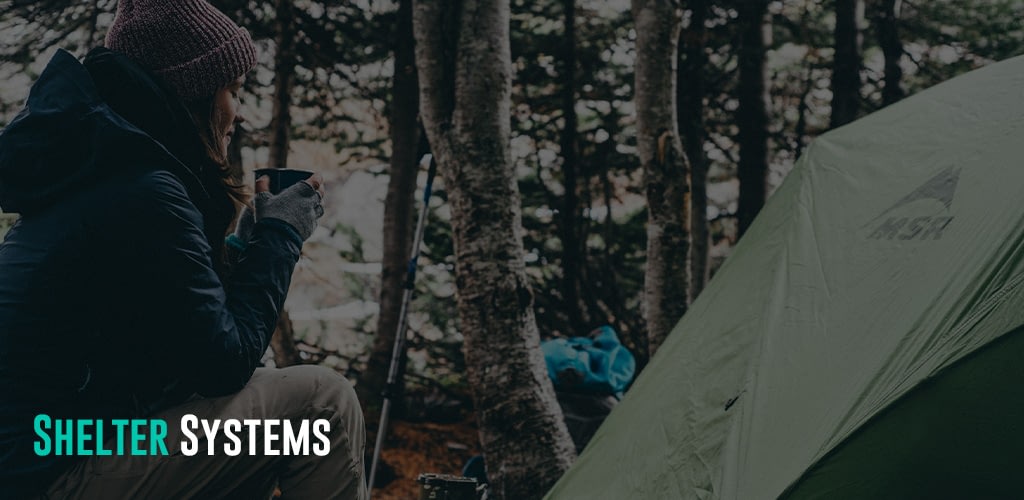
Having reliable shelter is paramount for any overnight hiking or backpacking trip. Are you seeking protection from the elements? Or just a comfy place to rest? A good shelter can have a major impact. Here’s what you need to know:
Tents: Capacity, Seasons, Weight
Capacity
- Choose a tent based on the number of occupants and desired living space.
- Allow extra room for gear storage.
Seasons
- 3-season tents for spring, summer, and fall
- 4-season or expedition tents for harsh winter conditions
Weight
- Lightweight backpacking tents prioritize minimizing weight.
- Heavier tents often offer more livable space and durability.
Tarp Shelters and Hammocks
Tarp Shelters
- Ultralight and versatile options for experienced hikers
- Require trekking poles or tying off to trees.
- Offer minimalist protection from rain and wind.
Hammocks
- Comfortable off-ground sleeping system
- Hanging straps and rainflies may be needed.
- Requires suitable trees or dedicated hammock stands.
Ground Pads and Sleeping Bags
Ground Pads
- Insulate yourself from the cold ground.
- Foam, self-inflating, or air pads in various levels of thickness/insulation
Sleeping Bags
- Temperature ratings matched to expected conditions
- Down or synthetic insulation, varying in weight and compressibility
- Properly sized for comfort and thermal efficiency
The shelter system you choose will depend on the type of hiking. It will depend on the expected weather, weight, and budget. Always practice setting up your shelter before hitting the trail.
Clothing Systems
Dressing right for the conditions is crucial. It keeps you comfy and safe on the trail. The key is layering your clothing. It lets you adjust your insulation as the weather and your activity change.
Layering Principles
Base Layer
- Next-to-skin moisture-wicking fabrics like merino wool or synthetics
- Keep yourself dry by transferring perspiration away from your body.
Insulating Midlayer(s)
- Lightweight fleece or insulated jackets for warmth
- Adjust the number of midlayers based on temperatures.
Outer Shell
- Water-resistant/breathable jackets and pants protect from wind and rain.
- Look for features like pit-zips, adjustable hoods, and pockets.
- Proper layering traps heat while allowing excess moisture/vapor to escape.
Headwear and Gloves
Headwear
- Hats and beanies provide warmth and sun protection.
- Balaclavas cover the face and neck in cold/windy conditions.
Gloves
- Lightweight glove liners allow dexterity.
- Insulated gloves or mittens for cold temperatures
- A waterproof or breathable outer material is ideal.
Features
- Reinforced palms and fingers increase durability.
- Touchscreen-compatible fingertips for using devices
- Removable liners enhance versatility.
A good clothing system is versatile and high-quality. Tailor it to your hiking environment. It lets you regulate your temperature, stay dry, and shield yourself from the elements. Don’t forget accessories like hats and gloves.
Trekking Accessories
Clothing and shelter are vital. But the right trekking accessories can greatly enhance your hiking experience and preparedness. Here’s what to consider:
Hydration Reservoirs and Bottles
Hydration Reservoirs
- Bladders (usually 2-3 liters) that fit in packs with drinking tubes
- Allow hands-free hydration while hiking.
Water Bottles
- Lightweight and durable bottles made from materials like plastic or metal
- Wide mouths make refilling and adding drink mixes easier.
- Insulated bottles help keep beverages cool or hot.
Food Storage and Cooking Gear
Food Bags/Containers
- Bear-resistant portable containers for food storage
- Stuff sacks, or dry bags, also help organize food.
Stoves and Fuel
- Lightweight backpacking stoves (canister, liquid, or solid fuel)
- Fuel canisters sized for your trip duration
Cookware
- Compact pots/pans optimized for heating efficiency
- Utensils, mugs, and bowls for food prep and eating
Fire Starters, Lighters, Camp Shoes
Fire Starters
- Waterproof matches, lighters, flint, and steel for emergency fires
- Firestarting aids like waxed cubes or solid fuel
Camp Shoes
- Lightweight shoes/sandals to give your feet a break
- Allow your hiking boots/socks to air out.
Having the right accessories makes the trail more comfy and fun. Don’t forget essentials like hydration, food prep items, fire sources, and camp luxuries.
Safety and Survival
Venturing into the great outdoors always carries some risk. Proper safety and survival gear can give you peace of mind. It could also save your life in an emergency. Here’s what you need:
First Aid Kits
Basic Kits
- Adhesive bandages, gauze, antiseptics, medications, etc.
- Compact and lightweight for day hikes
Comprehensive Kits
- Include splints, wound care supplies, and tools.
- It is necessary for extended backpacking trips away from quick rescue.
- Customize with personal medications and supplies.
Emergency Shelters
Emergency Blankets/Bivys
- Lightweight, insulating blankets for warmth and shelter
- Some have integrated ground sheets.
Tarp Shelters
- Versatile tarps can be rigged with trekking poles.
- Provide protection from wind, rain, and snow.
Signal Devices and PLBs
Whistles and Signal Mirrors
- Loud, pea-less whistles for signaling
- Compact signal mirrors attract attention.
Personal Locator Beacons (PLBs)
- Satellite-based emergency beacons for remote areas
- Triggers search and rescue response
Bear Spray/Deterrents
Bear Spray
- Potent pepper spray to deter bear/wildlife attacks
- Look for EPA-approved and field-tested formulas.
Bear Bells and Air Horns
- It can help you warn bears of your presence on the trail.
- Air horns create loud, deterrent noises.
Bringing the right safety and survival gear is key. Knowing how to use it is too. Having an emergency plan can give you the confidence to explore while reducing risk. Don’t overlook this essential hiking gear.
What to Pack for Day Hikes vs. Multi-Day Treks
The gear you pack for a hike depends on whether you’re going out for just the day or on a multi-day trek. Careful planning and packing are key. They ensure you have the essentials without being weighed down.
Day Hikes
Backpack
- Compact daypack with a 20- to 30-liter capacity
- Enough for layers, food, water, and essentials
Essentials
- Navigation (map, compass, GPS)
- First aid kit, headlamp/light, fire starter
- Extra clothes layer, rain jacket
- Snacks, plenty of water/hydration
Other Items
- Trekking poles, cameras, binoculors
- Compact emergency shelter
- Sun protection (hat, sunscreen)
Multi-Day Treks
Backpack
- Larger internal or external frame pack (50–80 liters)
- Designed for heavy loads and proper weight distribution
Shelter System
- Tent, tarp, or hammock with a rainfly
- Insulated sleeping pad and bag
Kitchen
- Backpacking stove and fuel
- Cookset and utensils
- Food and storage containers
- Water filter/purifier
Clothing
- A full-layering system for insulation and protection
- Extra socks and base layers
- Sleepwear and camp shoes
For any hike, always pack the “Ten Essentials” for safety. On longer treks, lightweight and compact gear takes priority. Carefully plan your meals, gear shares, and resupply options to minimize weight.
Caring For Your Gear
Investing in good hiking gear is important. But properly caring for it is key to keeping it working well for a long time. With the right maintenance, you can use your outdoor equipment for many years.
Cleaning and Maintenance
Backpacks and Tents
- Brush off dirt and debris after every trip.
- Use a gentle soap and water for spot cleaning.
- Allow it to fully dry before storing.
Clothing and footwear
- Follow the manufacturer’s instructions for technical fabrics.
- Use specialized cleaners made for waterproof/breathable materials.
- Replace footbeds and insoles regularly.
Trekking Poles and Hardware
- Wipe down poles and check adjustment mechanisms.
- Apply lubricant to prevent freeze-up or seizing.
- Inspect for cracks, separations, or damage.
Repairing and Reproofing
Field Repairs
- Carry repair supplies like tenacious tape, cord, and buckles.
- Learn basic splinting and binding techniques.
Reproofing
- Water-resistant coatings wear off over time.
- Reapply durable water repellent (DWR) treatments.
Delamination and Seam Sealing
- Have professionals repair delaminated fabrics.
- Seam seal tents and jackets as needed.
Proper Storage
Avoid Heat and Moisture
- Store in cool, dry places away from direct sunlight.
Don’t Compress Long-Term
- Allows lofts to retain insulation and fabrics.
Use Storage Sacks
- Breathable sacks for sleeping bags and tents
Conclusion
Going on a hike takes planning and preparation. But, with the right gear, you’ll be ready to tackle any trail confidently. Good gear includes strong shoes and versatile clothes. It also includes reliable shelters and essential safety gear. Investing in quality gear is an investment in your comfort, safety, and fun on the trail.
Remember, taking care of your gear will ensure its long life. It will let you create many outdoor memories for years to come. Are you ready to take your hiking to the next level? Be sure to check out our Trip Planning Tool. It lets you plan and customize your hikes. It ensures you have all the gear and resources for a successful journey.
At Travel-Wise, we’re dedicated to encouraging adventurers like you. We provide the tools and resources needed to plan great outdoor trips. Our Trip Planner App is made to simplify planning. It lets you make detailed plans. You can research trails and destinations. It helps you ensure you have all the gear for your hike. Join our community of outdoor enthusiasts. Let us help you start your next great adventure. We will give you the knowledge and gear you need to conquer any trail you choose.

